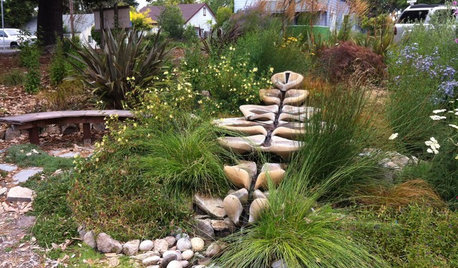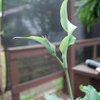So, Bob Solberg gave a talk this weekend and it was kinda funny. This was the first I'd ever heard him speak. He was quite fun!
Growing hostas... the bigger the better.
He talked about key components of gardening hostas. Water, light and nutrients.
He basically said that you cannot overwater hosta. Interesting. We've had members of GW who've grown hostas alongside a water feature, so it didn't surprise me that he said this.
Light. Well, remember my recent post about having moved hosta into the sun here in my z4 garden and how they're flourishing. He explained something here. He said that in his NC garden, at his longitude, hostas grow quite short. But "you guys up here [referring to Minnesota] can grow 'em tall"
Nutrients. No surprise here, he recommends lots of nitrogen. Early in the season, he recommends at least one application of a fertilizer with 18-24 in the Nitrogen number. He also recommended a foliar feed as the 2nd set of leaves are emerging. This will grow nice big leaves.
He said Osmocote is rendered ineffective when temps rise.
With the high nitrogen fertilizer, he said to also look for a significant amount of Magnesium too.. (higher up on the list of active ingredients. I think he said this aids in development of color.
So, there ya have it!









ken_adrian Adrian MI cold Z5
beverlymnz4
Related Professionals
Allen Landscape Architects & Landscape Designers · Harrison Landscape Architects & Landscape Designers · Gainesville Landscape Contractors · Arlington Landscape Contractors · Boca Raton Landscape Contractors · Essex Landscape Contractors · Lake Worth Landscape Contractors · West Chester Landscape Contractors · Braintree Driveway Installation & Maintenance · Leesburg Driveway Installation & Maintenance · Redford Driveway Installation & Maintenance · Baltimore Fence Contractors · Catonsville Fence Contractors · North Miami Beach Fence Contractors · Waltham Solar Energy Systemsirawon
coll_123
Steve Massachusetts
allnitro
hosta_freak
paul_in_mn
irawon
irawon
bkay2000
Steve Massachusetts
paul_in_mn
hosta_freak
Ludicious Acres
irawon
mosswitch
hostaLes
idiothe